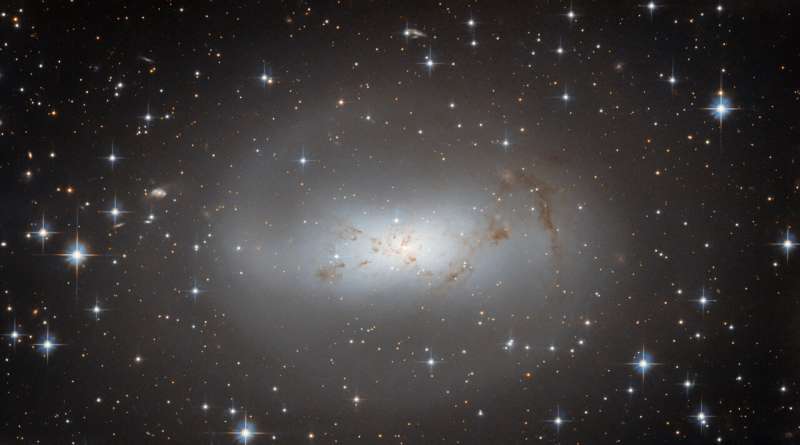

The highly irregular galaxy ESO 174-1, which resembles a lonely, hazy cloud against a backdrop of bright stars, dominates this image from the NASA/ESA Hubble Space Telescope. ESO 174-1 lies around 11 million light-years from Earth and consists of a bright cloud of stars and a faint, meandering tendril of dark gas and dust.
This image is part of a collection of Hubble observations designed to better understand our nearby galactic neighbors. The observations aim to resolve the brightest stars and basic properties of every known galaxy within 10 megaparsecs. A parsec is a unit used by astronomers to measure the vast distances to other galaxies—10 megaparsecs translates to 32 million light-years—and makes astronomical distances easier to handle. For example, the nearest star to the sun, Proxima Centauri, is about 1.3 parsecs away. In everyday units this is a staggering 25 trillion miles (40 trillion km).
The program to capture all of our neighboring galaxies was designed to use the 2%–3% of Hubble time available between observations. It’s inefficient for Hubble to make back-to-back observations of objects that are in opposite parts of the sky. Observing programs like the one that captured ESO 174-1 fill the gaps between other observations. This way the telescope can move gradually from one observation to another, while still collecting data. These fill-in observing programs make the most out of every last minute of Hubble’s observing time.
Provided by
NASA’s Goddard Space Flight Center
Citation:
Hubble checks in on highly irregular galaxy ESO 174-1 (2023, June 30)
retrieved 30 June 2023
from https://phys.org/news/2023-06-hubble-highly-irregular-galaxy-eso.html
This document is subject to copyright. Apart from any fair dealing for the purpose of private study or research, no
part may be reproduced without the written permission. The content is provided for information purposes only.